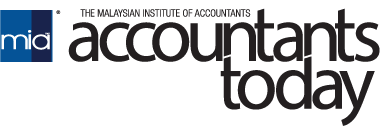By Sustainability, Digital Economy and Reporting Team
The Malaysian Institute of Accountants (MIA) has launched its inaugural Digital Technology Adoption Awards (DTAA) back in 2023 to recognise outstanding achievements in technology adoption within the accountancy profession. Focusing on three main categories, the DTAA sets out the following aspirations in technology adoption:
The Malaysian Institute of Accountants (MIA) has launched its inaugural Digital Technology Adoption Awards (DTAA) back in 2023 to recognise outstanding achievements in technology adoption within the accountancy profession. Focusing on three main categories, the DTAA sets out the following aspirations in technology adoption:
The Malaysian Institute of Accountants (MIA) has launched its inaugural Digital Technology Adoption Awards (DTAA) back in 2023 to recognise outstanding achievements in technology adoption within the accountancy profession. Focusing on three main categories, the DTAA sets out the following aspirations in technology adoption:
- Commerce and industry: Technology adoption is anticipated to drive improvements in the finance function.
- Public practice: Accountants are expected to retain, reimagine and innovate their practices and services
- Public sector: Technology adoption is expected to improve the efficiency of daily operations and increase the satisfaction of the public.
To inspire others, MIA has introduced an interview series called DTAA Winners in Action. This series highlight the exceptional winners who were celebrated at the prestigious DTAA Presentation Dinner in May 2024. In this edition, the spotlight is shone on Shukri Yusof & Co. (SYNC), recipient of the ‘Recognition Award’ in Practice Management Process for the category of Public Practice Firm with less than 10 employees.
Explore the captivating journey of Muhamad Shukri Yusof C.A(M) below, where you’ll learn how the firm has embraced digital transformation to elevate their services and achieve remarkable success in the DTAA.
Why did you adopt technology?
Before implementing digital technology, our company faced three big difficulties that stifled its growth and efficiency.
The first difficulty was a lack of prospects for advancement. With limited networking opportunities and slow career growth, expanding the firm was challenging. At this point, I had to multitask across multiple responsibilities, leaving little time for strategic planning or networking to recruit new clients. As a partner with various duties, finding the time to focus on growing the firm was a daily battle.
The second issue was significant employee turnover, which is a common problem in the accounting industry. Employees frequently leave for greater opportunities, resulting in a talent pool that is always changing. This necessitates regular onboarding and training of new personnel, using significant time and resources. The frequent need to train employees has disrupted workflows, causing inefficiencies and lower production.
The third difficulty was a lack of communication, particularly when team members left or were replaced. New employees often find it difficult to catch up on ongoing projects due to inadequate handovers, resulting in delays while they re-examined files to find and fix difficulties. This inefficiency does not only harm internal operations, but also strained relationships with clients who expect consistent service.

What technologies have you adopted?
To address these difficulties, we introduced several new technologies that revolutionised the way our practice functions.
The first solution was to use Optical Character Recognition (OCR) technology. This technology improved our data entry procedures by transforming manual records into digital formats. By automating data gathering and processing, OCR greatly reduces the time spent on repetitive operations, allowing our accountants to concentrate on analysis and strategic decision-making. This lowered time expenses and increased overall efficiency, resulting in higher margins and faster growth.
The second initiative includes process reengineering and innovation. We had to rethink our procedures and organisational structure as we transitioned from manual to digital workflows. By providing support tools and aligning team roles with digital workflows, we established a more efficient system that could meet the needs of a digital-first world.
The third solution was creating a Customer Relationship Management (CRM) system. This technology boosted team communication and collaboration, enabling smooth work delegation and file management. The CRM guaranteed that all team members, regardless of tenure, had access to project updates and could seamlessly transition into ongoing tasks. This decreases the impact of employee turnover while improving overall time management.
How was your digital technology implementation journey?
Our quest to integrate digital technologies began in 2018 with the formation of SYNC, which signalled the beginning of an organised approach to digital transformation.
Initially, we undertook a significant study to determine the most appropriate technology for our business. Reading papers, participating in discussions, and researching industry trends revealed that majority of solutions are developed for huge corporations and unsuitable for our limited resources. We opted to tailor these ideas to our own requirements, with a focus on cost-effective and scalable solutions.
The first step was to digitise data, which includes investing in OCR technology in 2018. This allowed us to automate data entry work and free up time for more value-adding tasks. By 2020, we had modified our technologies to boost processing capacity from 10 Optical Performance Measurement (OPM) to 55 OPM, improving our efficiency and scalability.
In 2021, we implemented a CRM system and cloud storage, resulting in a powerful environment for cooperation and data management. To correspond with the new digital processes, workflows and responsibilities must be significantly restructured. After two years of prototyping and revisions, we reached a point of maturity in our processes that allowed us to safely approach the expansion phase.
What is the impact of your technology adoption?
Adopting digital technologies had a significantly positive impact on our organisation, resolving the pain issues we first encountered while bringing us new potentials.
The key outcome was a substantial boost in productivity and efficiency. Automating data entry with OCR technology enables us to process information faster and more precisely, decreasing manual errors and saving time. This increased profit margins and prepared the company for long-term growth.
Furthermore, the digital ecosystem we developed enables our operations to be more flexible and mobile. Team members can collaborate efficiently from anywhere, increasing the firm’s adaptability to shifting work settings. Employee engagement and morale were boosted because of reduced stress and more empowerment in their roles.
The CRM system improved communication and file management, minimising disruptions caused by personnel turnover. Team members can transfer smoothly into ongoing projects, ensuring service continuity and enhancing client relationships. Overall, these reforms strengthened the firm’s resilience and prepared it for the future.
What is your future digital technology plan?
After successfully implementing the said digital transformations, we are thrilled to pursue additional prospects to improve our operations and contribute to the future of the accountancy profession.

We feel that our transformation path has resulted in useful insights and practices that can help other accountants. Sharing these ideas not only promotes sustainability in the profession but also encourages widespread acceptance of creative solutions. Moving forward, we plan to broaden our presence to international markets, providing our principles and tools to accountants around the world. This endeavour attempts to demonstrate the practical benefits of digital workflows, CRM systems, and data automation technologies, which may help businesses of all sizes achieve increased efficiency and growth.
In addition, we are excited to explore Artificial Intelligence (AI) technologies to improve our processes even further. AI has enormous potential to transform the accounting profession, from automating everyday activities to offering powerful predictive insights. Furthermore, machine learning algorithms could improve client interactions by personalising services based on past behaviour and preferences.
By incorporating AI into our existing digital ecosystem, we hope to gain further efficiencies, increase accuracy, and provide even more value to our clients. We envision a future in which AI not only supports human expertise but also drives global accounting practice innovation. This research is consistent with our goal to be at the forefront of technology innovations and keeping our processes nimble and future ready.
Do you have any tips to share with the readers?
Based on our experience, using digital technologies necessitates a thorough grasp of your organisation’s unique goals and challenges. Begin by establishing the specific problem statements to be addressed, as this will drive your technological choices and save time and resources.
We recommend starting small. Implement achievable improvements first, such as automating a single procedure, and then assessing the impact before escalating. This iterative approach allows you to learn from early implementations and make any necessary changes.
It is also necessary to invest in change management. Transitioning to digital workflows necessitates process reengineering, personnel training, and cultivating a change-oriented culture. Clear communication and continuing assistance are important for a successful shift. Finally, monitor and report the effectiveness of your digital endeavours. Documenting progress not only provides insights into what works, but it also helps to secure stakeholder support for future investments.
Why did you participate in the DTAA?
Participating in the DTAA was a pivotal decision for me because it took me outside of my comfort zone. I had little prior experience with contests or awards, but I grabbed the chance with a positive attitude and a willingness to learn.
My motivation was to be recognised for the years of effort that we had put into digital transformation. The DTAA gave me the opportunity to reflect on our journey, assess our progress, and identify areas for improvement. It also motivated me to look into new inventive solutions that could help the accounting business.
What is your advice to aspiring participants of the DTAA in the future?
For hopeful participants, I recommend viewing the process as a learning opportunity. Concentrate on the value your digital activities have generated, and don’t be reluctant to demonstrate your efforts. Even if you don’t win, the experience will teach you vital lessons and motivate you to push the limits of your profession.
For more information about the DTAA and the complete list of winners, click the links below:







